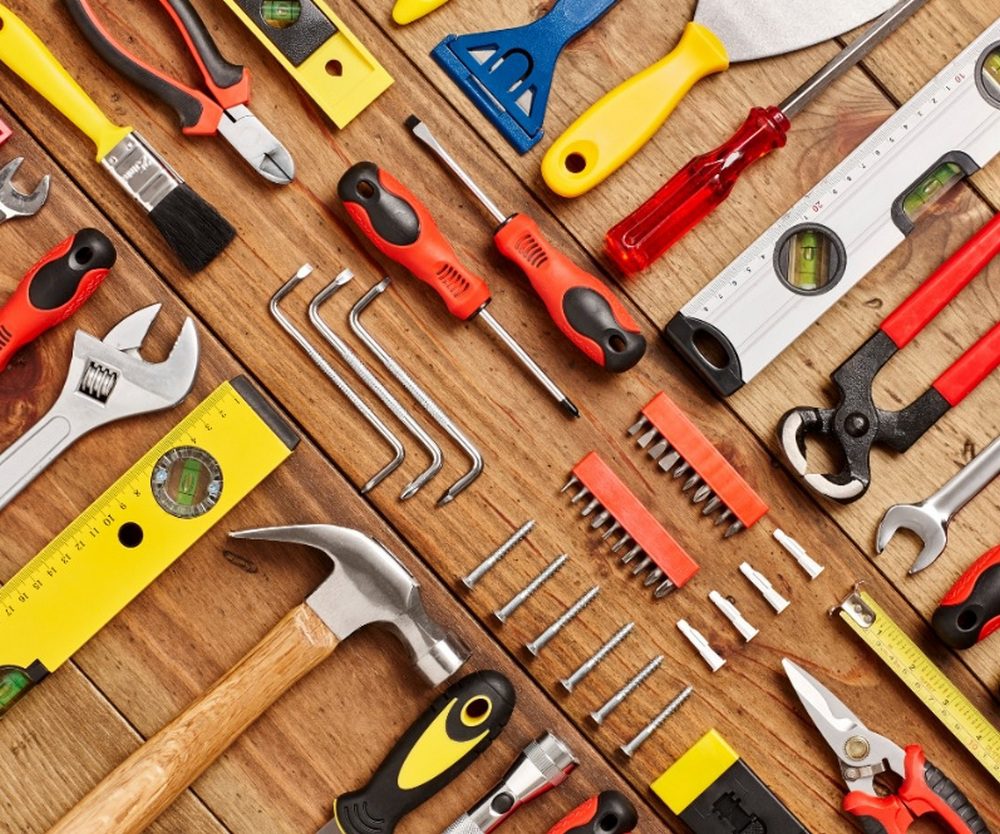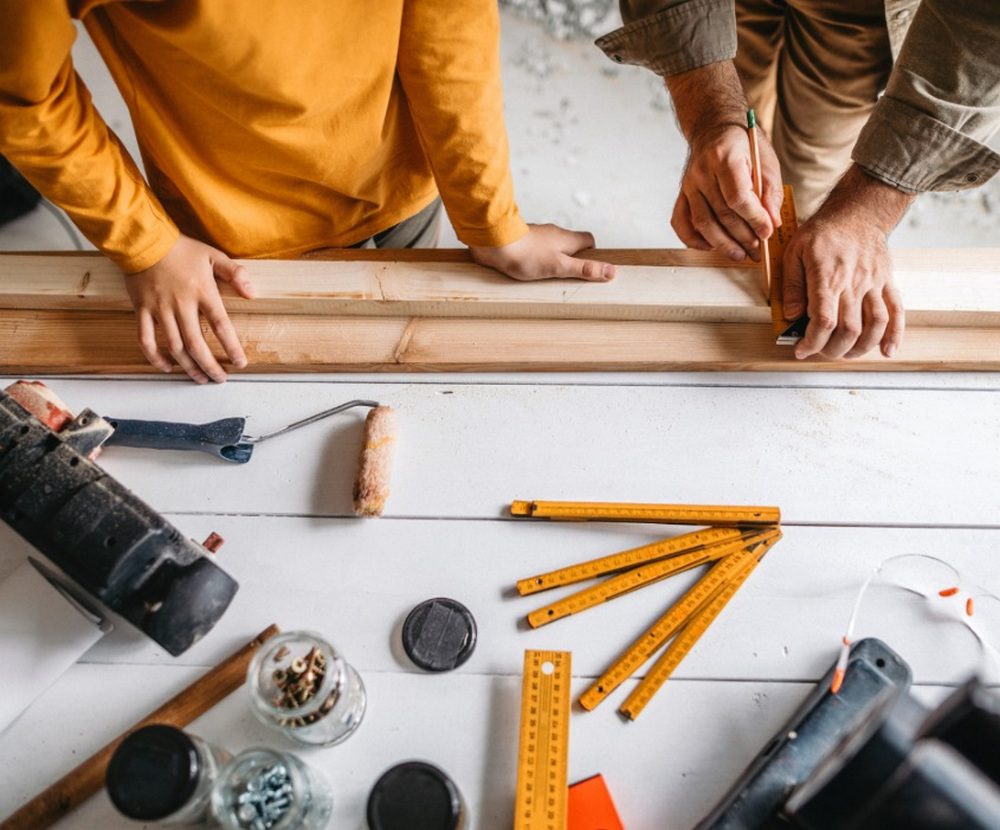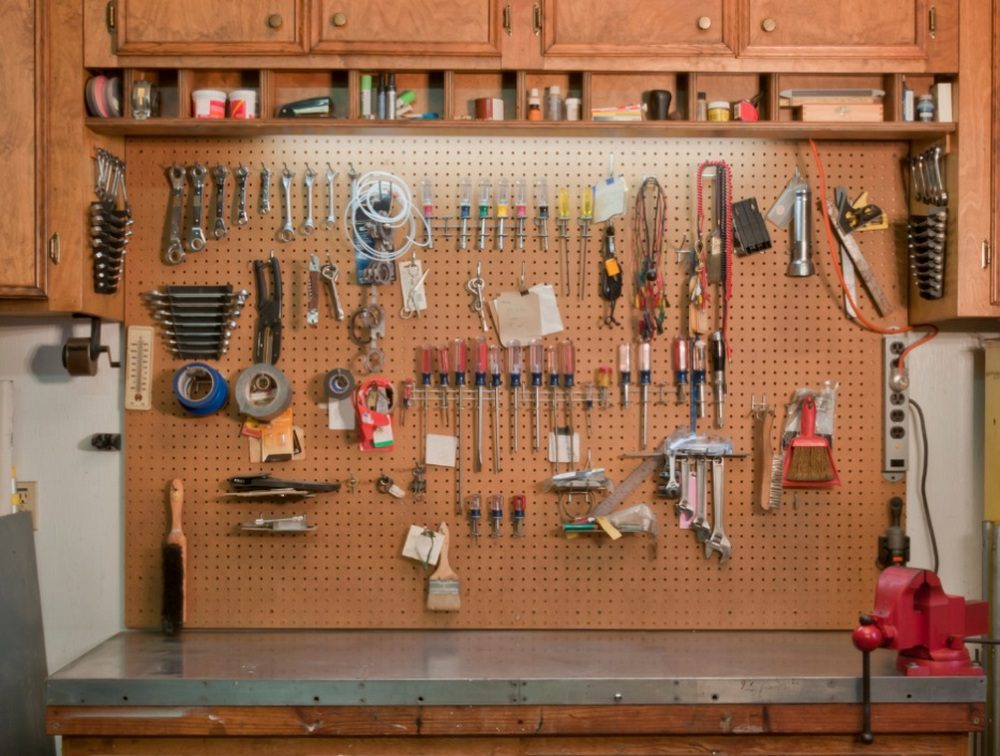Last Updated on May 21, 2024 by teamobn

Embarking on DIY building projects can be exhilarating. Not only do you get to create and customize your dream projects, but there’s also a sense of achievement in seeing your vision come to life.
Whether you’re constructing a backyard shed, a new deck, or renovating an old room, the success of your project relies heavily on having the right tools.
Here, we help beginners select the essential tools needed for the tasks they’ll encounter along the way.
Understanding the Basics: What Every DIYer Needs
Before diving into any building project, having some basic tools is crucial. These include:
- Measuring Tools: A tape measure is indispensable for precision. It’s vital to measure twice so you only cut once.
- Saws: A circular saw or a handsaw is essential for cutting wood or other materials.
- Power Drill: A versatile tool for drilling holes or driving screws.
- Hammer and Nails: Ideal for basic framing and construction tasks.
- Level: To ensure everything is perfectly horizontal or vertical.
- Pliers and Screwdrivers: For gripping, twisting, and turning.
Fortunately, if you’re considering a DIY project, you likely already own most of these tools. Once you’ve stocked up on those it’s important to know the more unique tools your project might involve.
Specialty Tools for Specific Projects
Specialty tools are designed to perform specific tasks beyond basic hand tools’ capabilities, ensuring precision, efficiency, and safety. Here’s a deeper look at some essential specialty tools for common types of DIY projects:
Tiling Projects
Whether you’re updating your bathroom or kitchen backsplash, precision-cutting tools are essential:
- Tile Cutters: Available in both manual and electric models, tile cutters allow you to make clean, straight cuts through ceramic, porcelain, and sometimes even glass tiles.
- Tile Nippers: Tile nippers are invaluable for shaping tiles around corners or making curved cuts. They allow you to chip away small pieces to fit your tiles around obstacles.
- Tile Leveling System: A tile leveling system can be crucial, especially for larger tiles that are prone to lipping, to avoid uneven tiles and ensure a professional finish.
Before starting your tiling project, dry-fit the tiles to check the layout. This step helps you plan the placement and avoid unnecessary cuts, ensuring a clean, professional finish.
Electrical Work
For those looking to tackle basic electrical tasks, such as installing new light fixtures or replacing outlets, safety and precision tools are non-negotiable:
- Wire Strippers: These are used to remove the insulation from electric wires so you can make connections safely. They come in various sizes to accommodate different wire gauges.
- Voltage Testers: Before working on any electrical component, a voltage tester can help ensure the circuit is de-energized, preventing electrical shock or damage.
- Multimeters: For more complex diagnostics, a multimeter measures voltage, current, and resistance, which are critical for troubleshooting electrical problems.
If you’re not confident about handling electrical work, there’s no shame in calling a professional electrician. When dealing with electricity, it’s often better to be safe than sorry.

Woodworking Projects
If your DIY projects involve woodworking, having tools that cater specifically to cutting, shaping, and finishing wood can elevate your work:
- Jigsaws: Jigsaws are ideal for cutting intricate curves and shapes in wood. They allow for greater creativity in projects like custom shelving or decorative garden pieces.
- Wood Chisels: Used for carving or cutting wood by hand, chisels are perfect for detailed work or adjusting joins.
- Orbital Sander: To achieve a smooth finish on your wooden projects, an orbital sander can remove rough edges and surface material efficiently, prepping the wood for painting or staining.
There are a ton of brilliant woodworking tips for beginners, but one of the most important things to remember is to use sharp tools. This ensures cleaner cuts, improves precision, and reduces the effort needed, making your work safer and more efficient.
To reiterate: Remember to measure twice and cut once.
Painting and Decorating
For those looking to add a fresh coat of paint or apply wallpaper, some speciali9zed tools can ensure a clean, smooth application:
- Paint Sprayers: Offering a faster and more even application than traditional brushes and rollers, paint sprayers are perfect for large areas or textured services.
- Wallpaper Steamers: A steamer can simplify the process of removing old wallpaper, softening the adhesive for easy removal without damaging the underlying surface.
When painting, start with the edges and corners using a brush to create clean lines, then fill in larger areas with a roller for a smooth, even finish.
By investing in these specialized tools, which can often be found at a well-stocked tool supply store, DIY enthusiasts can tackle a wider range of projects with confidence and professional results. Whether you’re laying tiles, wiring a new lamp, or crafting a wooden coffee table, the right tools will not only make the job easier but also more enjoyable.

Storing and Maintaining Your Tools
Proper storage and maintenance are key to extending the life of your tools. Organize your tools in a clean, dry place and perform regular maintenance, such as sharpening blades and oiling moving parts. This ensures they’re always ready when you need them.
Learn From Others: Resources and Inspiration
The DIY world can feel overwhelming at times. There are always a million projects you can start, especially if you are looking for easy DIY projects to make your apartment feel like home.
The first step to settling on which project to start is to prioritize based on your needs and the impact each project will have on your living space. Consider which changes will make the biggest difference in your daily comfort and functionality.
Start with projects that can be completed quickly or those that address the most urgent functional needs of your apartment. This approach not only streamlines your DIY agenda but also ensures that your efforts have immediate, noticeable effects on your living environment.
Plus, if it’s a larger project like a full room renovation, you’ll appreciate the functional changes that you took care of first, while you work on the rest of the room.
For example, installing new shelving or fixing a leaky faucet can immediately improve usability and comfort. These smaller wins provide motivation and functionality, allowing you to live more comfortably as you tackle more extensive aspects of the renovation, such as painting walls or replacing flooring.
The Best Builds Start With the Right Tools
Beginning your DIY building projects with the right tools sets the stage for a successful build. From measuring tapes to power drills, each tool plays a pivotal role in bringing your project to fruition.
Remember, the best builds start with the right set of tools.








